
Research Blogs

Stability insights at 85 °C with Litos Lite, Paios and Setfos
This study shows how Litos Lite, Paios and Setfos helped uncover the links between electrical behaviour, structural changes and degradation in perovskite solar cells operated at 85 °C, enabling clearer insights into stability mechanisms.

What is Opixs and why do you need it?
Opixs is Fluxim’s new simulation tool for analysing OLED pixel structures, power efficiency, colour performance and novel display concepts such as tandem and TurboLED®. This article shows how Opixs evaluates layouts, brightness scaling and roll-off to guide better display design.
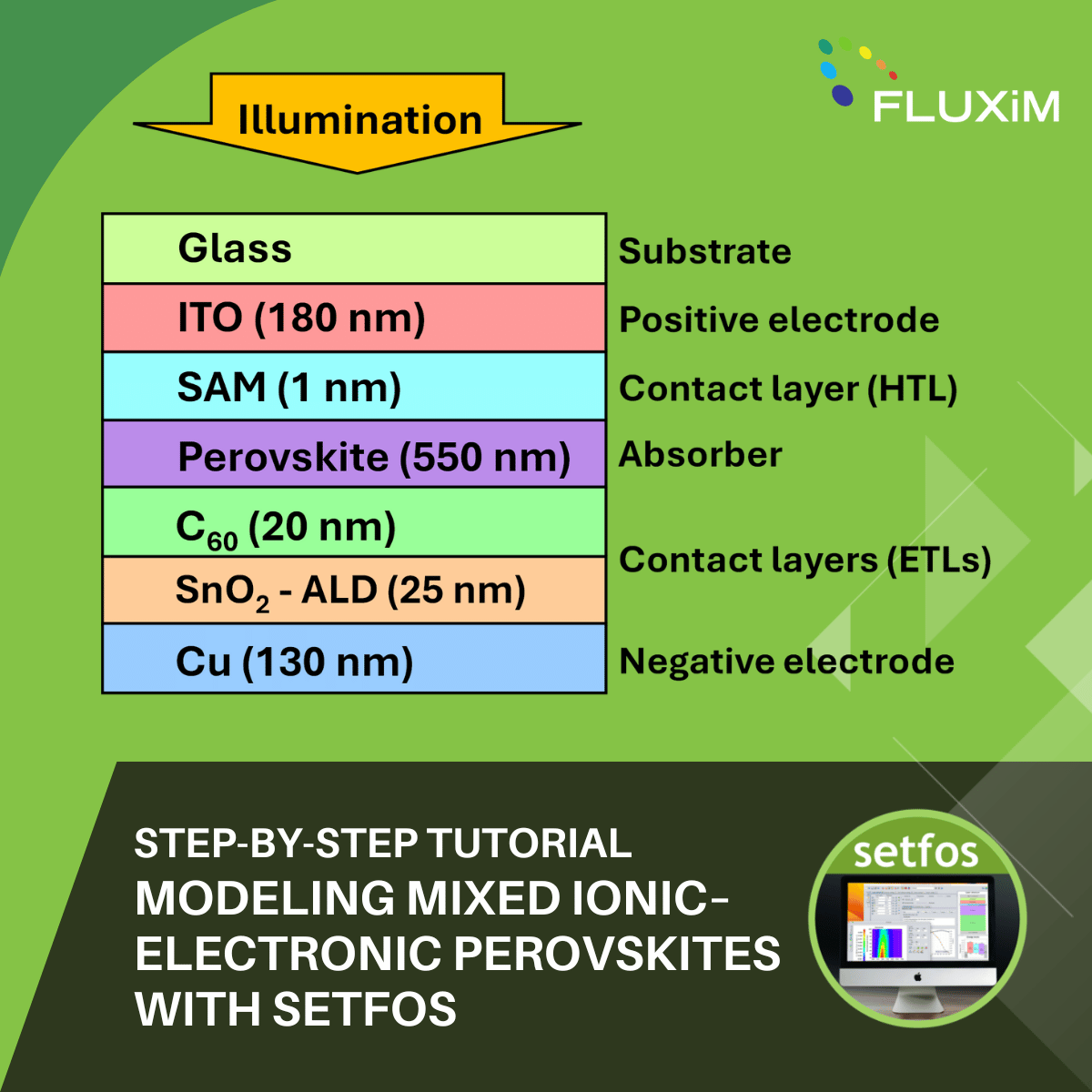
Setfos modeling of halide perovskite solar cells with focus on their mixed ionic-electronic conducting properties: a step-by-step tutorial
Learn how to create a realistic digital twin of a halide perovskite solar cell using Fluxim’s Setfos. This step-by-step guide explains how to combine Paios measurements with drift-diffusion and optical modeling to capture ionic migration, hysteresis, and impedance behavior—helping researchers link device physics to performance and stability.

Multi-Stack OLED Simulation with Setfos and Laoss – Automotive OLEDs, Lighting, Microdisplays
Learn how OLEDWorks uses Fluxim’s Setfos and Laoss to develop high-performance multi-stack OLEDs for automotive lighting, microdisplays, and sustainable lighting solutions. Includes simulation strategies, case studies, and performance outcomes.

Beyond 2100 Hours: ETU-Stabilized Perovskite Solar Cells Demonstrate Exceptional Lifetime on Fluxim's Litos Platform
Breakthrough stability for perovskite solar cells: By suppressing stacking faults using an ETU additive, FA-rich perovskite devices achieved over 2100 hours of >93% PCE retention. These results, validated on Fluxim’s Litos platform, show the power of crystal facet engineering combined with precision stability testing.

TADF OLEDs and Hyperfluorescent OLED Simulation with Setfos
Simulation of Organic light‐emitting diodes (OLEDs) using thermally activated delayed fluorescence (TADF). Emission zone analysis and a parameter study. Possible routes for efficiency enhancement.

Photon recycling in perovskite solar cells assessed by a detailed-balance compatible dipole emission model
In solar cells, photon recycling leads to an increase in the open-circuit voltage of the device. This tutorial explains how to exploit self-absorption to increase the efficiency of the solar cell.
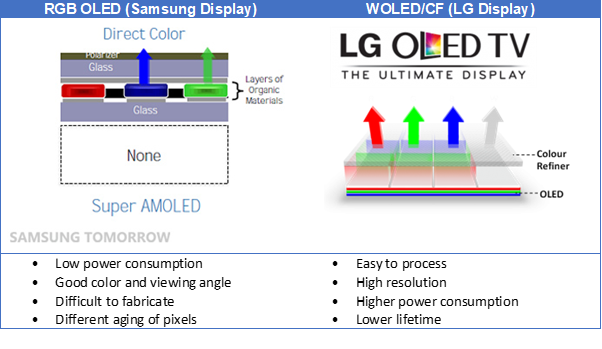
Quantifying Electro-Optical Cross-Talk in White OLED / Color Filter Displays
Understanding electrical and optical cross-talk effects in displays by using simulation and characterization. Reduction of the cross-talk deleterious effect.
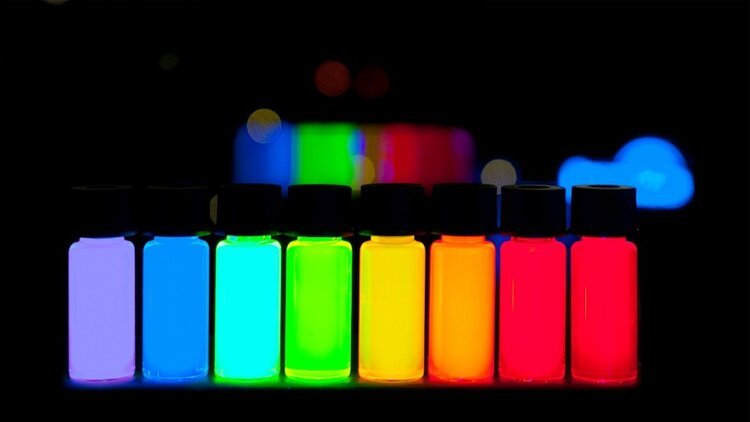
Light Conversion using Perovskite Quantum Dots
This tutorial presents the main properties of quantum dots and gives an example of how to characterize films with embedded quantum dots using angular resolved spectroscopy.
Investigating Current Matching and Hysteresis in Perovskite-Silicon Tandem Solar Cells with Drift-Diffusion Simulations
Perovskite-silicon tandem solar cells are revolutionizing photovoltaics, but optimizing current matching between layers is critical for achieving peak efficiency. A mismatch can lead to power losses, limiting overall performance. In this blog, we explore how optical and electrical simulations help fine-tune device design, ensuring both sub-cells generate maximum power.
Discover how precise modeling can boost tandem cell efficiency and accelerate the path to commercialization.
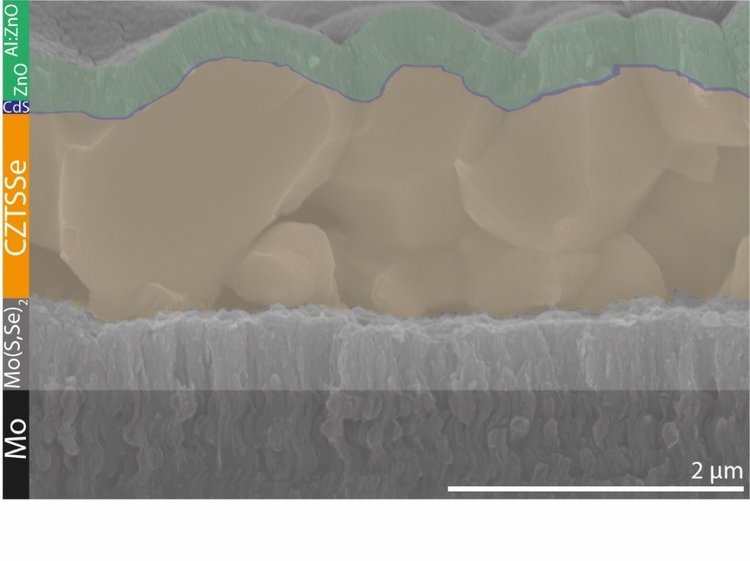
Stability Testing and Electronic Characterization of Kesterite Solar Cells for Indoor Applications
Fluxim presents advanced stability testing and electronic characterization techniques for kesterite solar cells. Learn how these tools enhance efficiency and reliability, making them ideal for indoor applications. Discover breakthroughs in renewable energy research!

Advanced OLED Research with Setfos – Insights from Professor Chris Giebink
Discover how Professor Noel Giebink and his team use Setfos to advance OLED research. Learn how Setfos simulations help optimize device performance, improve efficiency, and push the boundaries of OLED technology. Get a free 1-month evaluation license today!

How to correctly simulate the EQE of an organic tandem solar cell using full optoelectronic simulations
Learn how to accurately simulate the external quantum efficiency (EQE) of organic tandem solar cells with full optoelectronic models in SETFOS. Explore optical and electrical setups, EQE measurement techniques, and design optimizations.
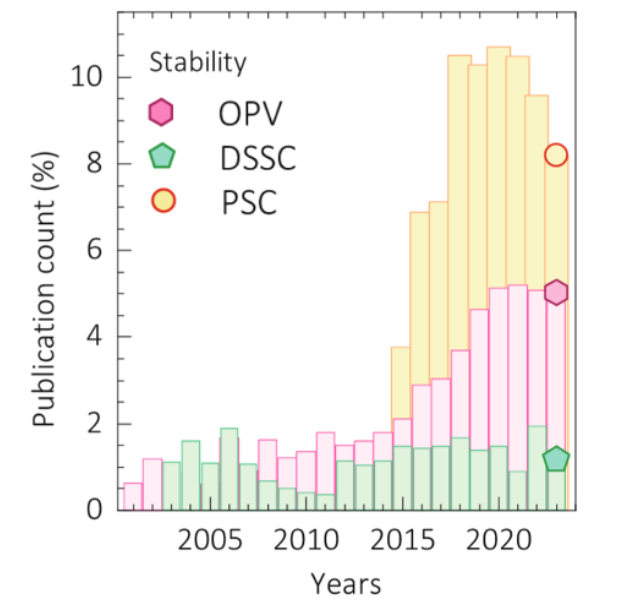
Aging and Characterization of High-Bandgap Perovskite Solar Cells
Explore how advanced material and optoelectrical characterization techniques uncover the degradation mechanisms in high-bandgap perovskite solar cells. Discover the impact of temperature on aging, insights from electrical characterization, and the significance of parallel stressing for statistical validation.
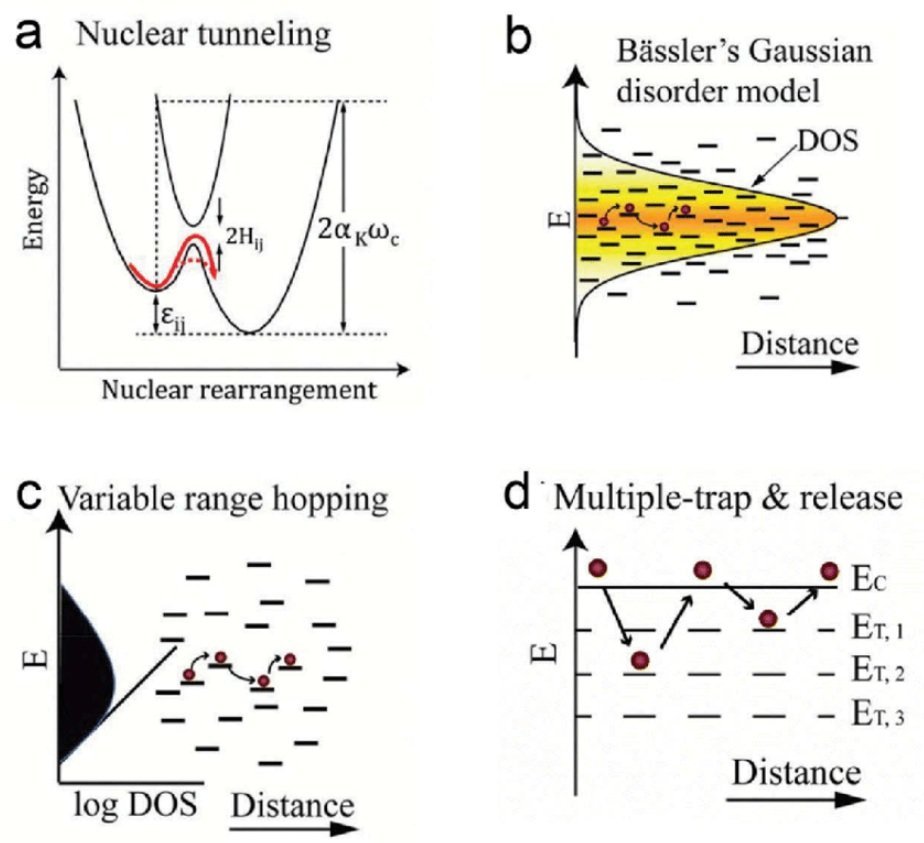
Space Charge Limited Current (SCLC) and Charge Carrier Mobility in Organic Semiconductors
Discover how charge carrier mobility is measured in organic and perovskite semiconductors. This guide explains the Space Charge Limited Current (SCLC) method, with its key advantages, limitations, and applications.

Highest Efficiency Solar Cells: Perovskite Solar Cells (2026 Update)
Discover the groundbreaking 34.85% efficiency record set by Longi in April 2025 for a perovskite/silicon tandem solar cells in. Learn how simulations can be used to optimize performance and explore the potential of multi-junction solar cells.
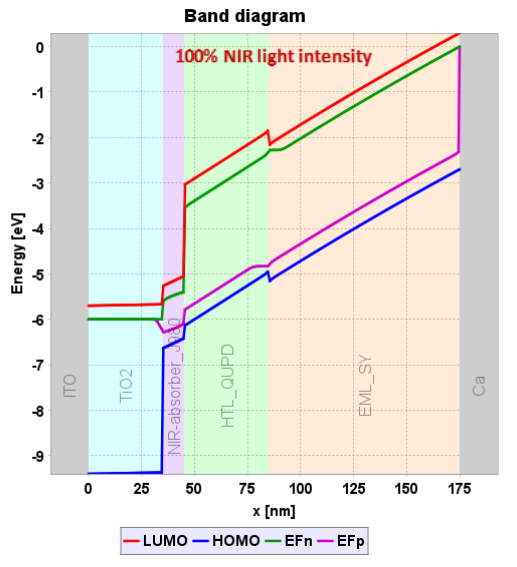
A Tutorial on Drift-Diffusion simulations
This tutorial introduces the fundamental drift-diffusion equations used to simulate charge transport and recombination in OLEDs, photodetectors, and solar cells. As a case study, we analyze the response speed of narrowband organic optical upconversion devices (OUCs), highlighting how mobility and recombination processes affect device performance.
How to Improve Measurement Accuracy of LED and PV Devices with a Common Electrode
Non-metalized contact pads and shared electrodes can undermine the accuracy of solar cell and LED measurements due to high contact resistance, distorting current-voltage (IV) curves and resulting in incorrect maximum-power-point (MPP) and open-voltage circuit (Voc) values. However, solutions exist: metallizing contact pads with gold or silver can reduce resistance issues, and avoiding common electrodes in multi-pixel designs can further enhance measurement accuracy, leading to improved reliability and efficiency in solar cells and LEDs.
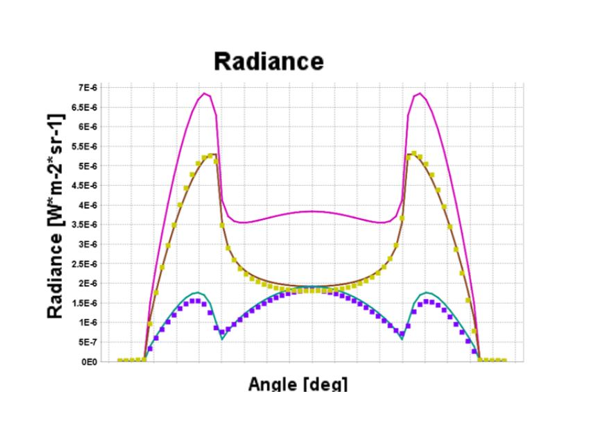
Angular Resolved Photoluminescence and Electroluminescence of light emitting materials
Setfos can analyze angular-dependent PL data collected by Phelos to get information about the properties of an organic emitter, such as the orientation of the dipoles and the width of the emission zone. With this analysis, we are able to optimize the characteristics of our OLEDs for high EQEs.

Estimation of Charge Carrier Mobility in Solar Cells: An Introduction to CELIV
Dive into the world of mobility in solar cells, and explore how CELIV measurements help determine charge carrier mobility in thin-film solar cells like perovskite and organic solar cells. Learn about various CELIV techniques and their applications in this comprehensive research blog.
